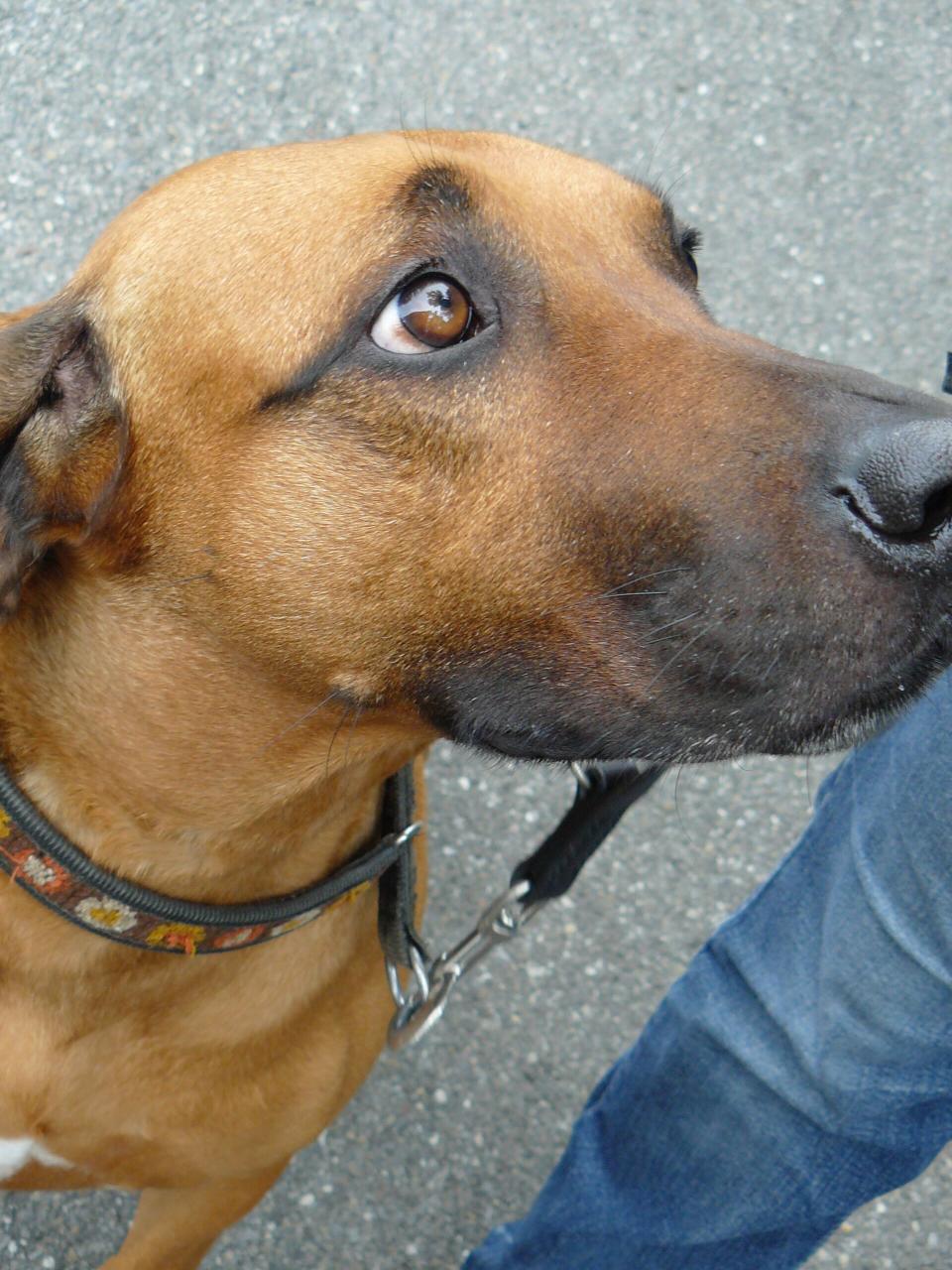Dogs evolved ‘puppy dog eyes’ just to appeal to humans, scientists find

If you’ve ever thought that your four-legged friend knows exactly how to tweak your heart strings with big ‘puppy dog eyes’, you’re absolutely right.
Dogs actually evolved new facial muscles purely to put on ‘sad eyes’ for their human masters, a study has found.
Researchers compared the muscles of dogs with wolves (their closest wild relatives).
They found, in the first detailed anatomical comparison of dogs and wolves, that over thousands of years the domesticated animals faces changed just so they can communicate better with people.
Dogs, unlike wolves, have a tiny muscle above the eyes, which lets them raise their inner eyebrow, next to their noses, to persuade humans to care for them.

Scientists said the 'sad eye' trait, sometimes used by dogs when they are hungry, makes their eyes appear larger and more child-like, triggering a caring response from humans.
It is estimated dogs began evolving the muscle around 33,000 years ago when they were separated from wolves and the evidence suggests it would have given them 'selection advantage' during domestication.
Read more from Yahoo News UK
Woman gives birth to baby boy on motorway hard shoulder
North Korean leader received his first gun aged 11
Indian magician feared dead after ‘Houdini’ river stunt
Lead author Dr Juliane Kaminski, from the University of Portsmouth, said: 'The evidence is compelling that dogs developed a muscle to raise the inner eyebrow after they were domesticated from wolves.
'We also studied dogs' and wolves' behaviour, and when exposed to a human for two minutes, dogs raised their inner eyebrows more and at higher intensities than wolves.

'The findings suggest that expressive eyebrows in dogs may be a result of humans unconscious preferences that influenced selection during domestication.
'When dogs make the movement, it seems to elicit a strong desire in humans to look after them.
'This would give dogs that move their eyebrows more of a selection advantage over others and reinforce the 'puppy dog eyes' trait for future generations.'
Previous scientific research has shown that when dogs do this look it increases the release of oxytocin - the love hormone - in humans, in the same way the level is raised when a parent gazes upon their child.
Dr Kaminski also said the brow movement is 'significant' in the bond with dogs as it 'elicits a caring response from humans' and could create the 'illusion of human-like communication'.
The study revealed dogs have solid muscle structure around their eyes while wolves only have an 'irregular cluster of fibres'.

 Yahoo News
Yahoo News 
